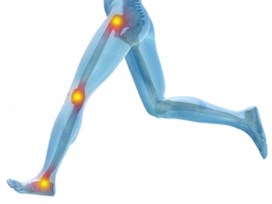Your Musculoskeletal Assessment
What you can expect when you are assessed?
The Assessment
Typically our Podiatrists discover the patient's left and right sides are not symmetrical. This can be the result of one leg being slightly longer than the other, a leg being slightly bowed or pelvic torsion.
There are two parts to the assessment: A static assessment where the patient is assessed laying down and standing up. This is a non-weight bearing anatomical examination that involves muscle testing, weight bearing lower limb posture assessment.
This will be followed by a dynamic assessment where the patient is assessed walking or running.
The goal of the assessment is to identify the underlying causes of pain. The assessment will explore:
- are there underlying imbalances contributing to your foot, ankle, leg, knee, hip or back pain.
- as you start increasing your mileage – are you at risk of injury?
- Are you performing the right exercise to maximize your foot function?
- Do your shoes provide the right support?
- Do you have a chronic problem affecting the way you walk or have an artificial knee or hip?

Once assessed, a patient specific treatment plan can be put in place to improve the symptoms. This may include:
- exercise strength and conditioning programme
- over the counter orthotics
- custom made orthotics
- footwear advice
A full assessment can take around 45 minutes and patients are advised to bring shorts to wear so the knees can be viewed during the assessment.

